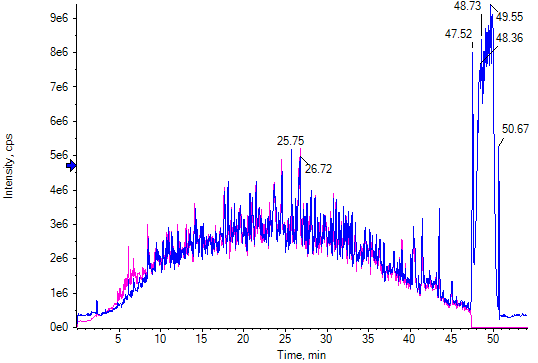When analyzing highly complex samples from biological matrices, there can be significant amounts of material that elute in the wash cycle of the LC run, depending on the up-front sample preparation used. The Scheduled Ionization mode, available in both SCIEX OS software and Analyst software, can be used to reduce the amount of this material that enters the mass spectrometer.
With Scheduled Ionization enabled, the user can set the start and stop times for when the ionization voltage is turned on during an LC-MS run. This precisely controls ion formation at the source and is significantly easier than using divert valve strategies to remove the flow from the source. The nebulizing gas (GS1) remains on to continuously remove the LC flow from the spray tip, however, because the ionization voltage is off, ions are not formed and nothing enters the mass spectrometer.
Scheduled Ionization is easily enabled in the user interface of SCIEX OS or Analyst software by adding start and stop times for the ionization period. An example from SCIEX OS software is shown below:

Below is an example chromatogram of a cell lysate sample analyzed on the ZenoTOF 7600 system using SWATH DIA. In the absence of Scheduled Ionization (blue trace), many ions from the sample eluted during the high organic wash. When the Scheduled Ionization mode was enabled (pink trace), the ionization voltage was shut off when the peptide elution was complete, before the high organic flush, which prevented material from entering the MS during the wash.

RUO-MKT-18-14611-A



 Contact Support
Contact Support
0 Comments